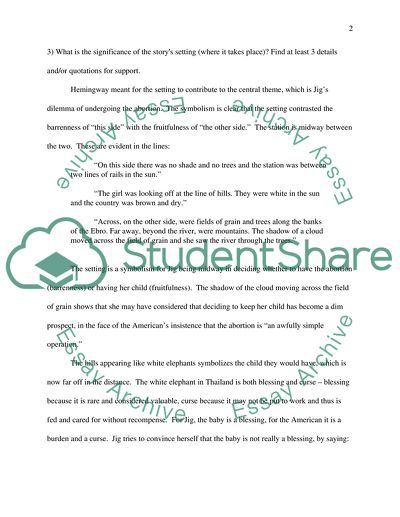Analysis of Hemingways Hills Like White Elephants Assignment. Retrieved from https://studentshare.org/literature/1558043-hills-like-white-elephants
Analysis of Hemingways Hills Like White Elephants Assignment. https://studentshare.org/literature/1558043-hills-like-white-elephants.


